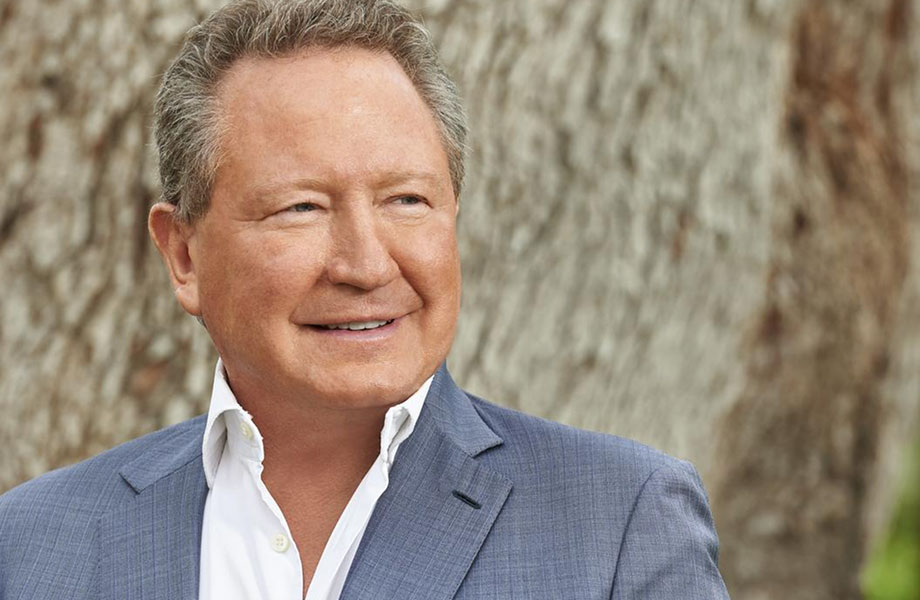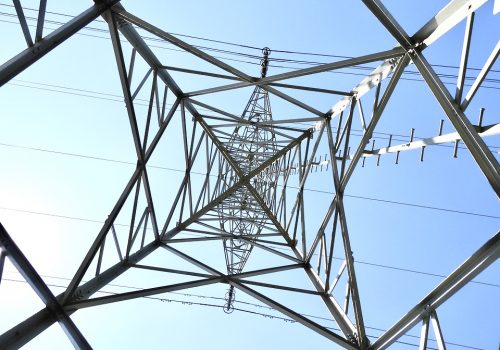As the global community continues to grapple with the coronavirus (COVID-19), the Atlantic Council is open for business. Our business, meetings, and events, however, are occurring virtually. For more information, please read an update from our President and CEO.
Event Recap
On May 19, 2021, the Atlantic Council Global Energy Center and Scowcroft Center for Strategy and Security hosted a fireside chat with Dr. Andrew Forrest on the key developments and next steps to developing the global green hydrogen economy. The event was part of the Global Energy Center’s Fireside Chat series, which highlights key energy leaders and provides a platform for the energy issues that will define the future. Dr. Forrest is the founder and chairman of Fortescue Metals Group (Fortescue), a natural resources company that has invested over $40 billion USD developing global scale infrastructure and some of the world’s most efficient resource extraction and transport techniques. In 2021, Fortescue announced its commitment to reach net-zero emissions by 2030 and created Fortescue Future Industries (FFI), a developer, financier, and operator of a global portfolio of renewable energy resources with the goal of producing green energy at scale. Randolph Bell, director of the Atlantic Council Global Energy Center and Morningstar chair for global energy security, delivered introductory remarks and moderated the discussion.
Dr. Forrest opened the discussion by reflecting on his travels to forty-seven countries, during which he “learned that the world is at magnificent or horrifying crossroads.” By meeting leaders from around the globe, he became convinced of the need for countries to pursue clean, zero emissions energy. An integral part of this future, Dr. Forrest believes, is green hydrogen made by separating water into its component parts through electrolysis. He added that developing countries, many of which have significant renewable resources, can greatly benefit from hydrogen production. “Energy can become democratic, can become ubiquitous, and 100 percent green. That is what I learned from moving around the world,” said Dr. Forrest.
In response to a question about regions with a particular appetite for hydrogen, Dr. Forrest noted that North America has the potential to become a green hydrogen superpower, but countries in the developing world—especially dry regions—are well-suited to solar and wind-powered electrolysis. Addressing the challenges associated with hydrogen deployment, Dr. Forrest recalled his experiences with leaders in California, South Korea, and Japan, saying they were weary to adopt hydrogen into their supply chains because of uncertainty over its future.
Ambassador Paula Dobriansky, a member of the Australian-American Leadership Dialogue, asked how the United States and Australia could cooperate on hydrogen. “We are cooperating,” Dr. Forrest responded. “Hydrogen is understood as being the future, but most technologists I speak to understand that the American government and many of its industries get tied down with going from fossil fuels to blue hydrogen and green hydrogen.” Technologists and suppliers in the United States should instead focus on bringing down the cost from $1 million to $200 thousand per megawatt, which is currently within reach. Dr. Forrest added that investment with US companies into hydrogen could create many jobs.
The conversation moved to the power needed to produce green hydrogen and the means by which to scale it to scale and source investments. Dr. Forrest stressed that meeting future consumer energy demands is possible, but that energy must be 100 percent green without compromises. He also added that stranded assets can be used to develop hydrogen and that the capital costs of hydrogen can be much lower than those of oil and gas. “We just need a bit of vision to develop this,” he said.
Dr. Forrest repeatedly emphasized the importance of using green hydrogen, which comes from renewable sources, as opposedto blue hydrogen created using coal and gas. He added that blue hydrogen “perpetuates and extends the lie that we need fossil fuels to keep on going.” He further stressed that coal workers, in places like West Virginia, need not be anxious about green energy, as the industry needs their skills.
As the discussion turned towards demand for hydrogen and immediate opportunities for deployment, Dr. Forrest opined that while heavy equipment was one option, the real opportunities were in shipping and coal-fired utilities. By changing injection systems, cargo ships could use green ammonia today. Furthermore, according to Dr. Forrest, all coal-fired utilities in North America today could be replaced using 20 percent green ammonia. Another important opportunity lies in creating synthetic fuel by combining captured carbon and green hydrogen, which can be used for jet aviation.
Dr. Forrest wrapped up the discussion by noting the importance of making profits from green hydrogen technology and particularly electrolysis to convert water into hydrogen at the lowest possible cost. The winners from this technology, Forrest added, will be consumers and the climate.
Geronimo Gutierrez is a Summer 2021 intern at the Atlantic Council Global Energy Center.
Featuring

Dr. Andrew Forrest
Founder and Chairman
Fortescue Metals Group

